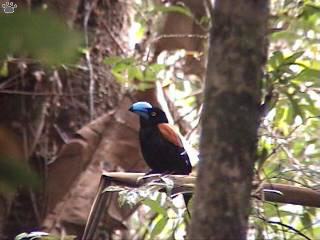
Helmet vanga (Euryceros prevostii), Parc National Marojejy, Madagascar.
Madagascar - Part 5
Madagascar has about 260 bird species. About half of them are either endemic, or live only here and on a few small islands nearby. Some of the endemics are relatively recent arrivals, and differ little from their relatives in other parts of the world. Others have been here for a long time, and have evolved into spectacular variety of forms. As with other flora and fauna, most are of African origin, but surprisingly many have Asian connections.
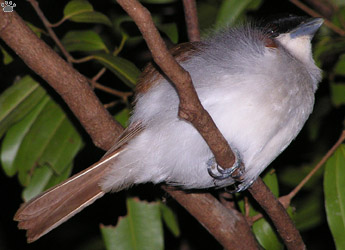 |
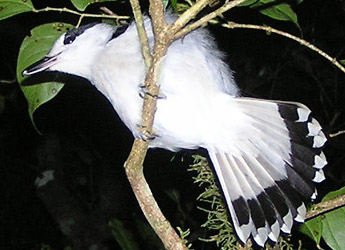 |
| Many species of vangas are easier to find at night, when they sleep on low branches. Left - rufous vanga (Schetba rufa), right - hook-billed vanga (Vanga curvirostris). Parc National L'Ankarana. |
 |
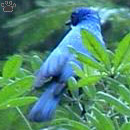 |
Vangas might be descendants of one of the first birds to reach Madagascar. Related to African shrikes, they have evolved into many shapes, from nuthatch-like to toucan-like. |
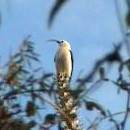 |
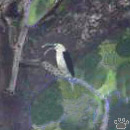 |
Blue vanga (Cyanolanius madagascarinus),
Park National Andasibe-Mantadia. |
Sickle-billed vangas (Falculea palliata),
Parc National d'Ankarafantsika. |

Helmet vanga (Euryceros prevostii),
Parc National Marojejy. |
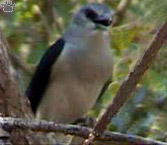
White-headed vanga (Artamella
viridis), Kirindi Forest Reserve. |
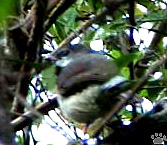
Red-shouldered vanga (Calicalicus
rufocarpalis), Parc National Masoala. |
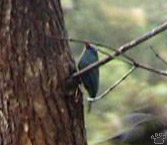
Nuthatch vanga (Hypositte malgache),
PN Andasibe-Mantadia. |

White-breasted mesites (Mesitornis
variegata), PN d'Ankarafantsika. |
Another endemic family, the mesites, is so old that its origins are unclear, and no close relatives survive elsewhere. Like most other ancient endemics of Madagascar, mesites inhabit dense forests, and are very difficult to photograph.
|

Subdesert mesite (M. benschi),
Reniala Nature Reserve. |
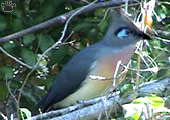 |
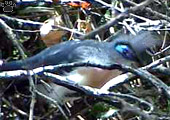 |
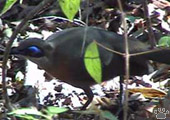 |
 |
| Crested coua (Coua cristata), Park National L'Ankarana. |
Coquerel's coua (C. coquereli), Reniala Nature Reserve. |
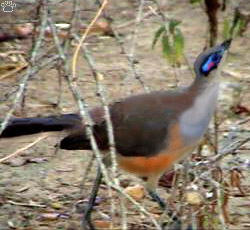
Giant coua (C. gigas), Toliara. |
Couas probably originate from some Asian ground-cuckoo. There used to be twelve species, but three are already extinct. Couas are often very tame, and a bit more easy to find than many other forest birds, but seeing all nine is still a bit of a challenge. Six of them inhabit dry forests of southern and western Madagascar; only four live in rainforests. |
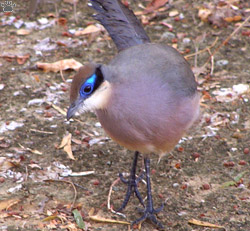
Red-capped coua (C. ruficeps), Reniala FR. |
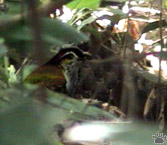
Short-legged ground-roller
(Brachypteracias leptosomus), Masoala. |
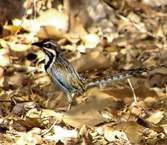
Long-tailed ground-roller
(Uratelornis chimaera), Reniala FR. |
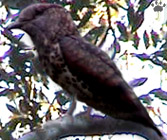
Cuckoo-roller (Leptosomus discolor),
female, PN d'Ankarafantsika. |
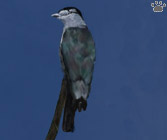
Cuckoo-roller, male,
PN Marojejy. |
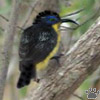
Yellow-bellied asity
(Neodrepanis
hypoxantha),
Maromizaha FR. |

Velvet asity
(Philepitta castanea),
Parc National
Marojejy. |
Other endemic groups include colorful ground-rollers, a strange bird called cuckoo-roller, tiny and very cute asities, and Malagasy warblers. The latter are not so exotic-looking, so they've been little studied, and their systematics are in process of reshuffling (an overview can be found at Don Robertson's website). |
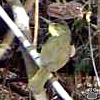
Thamnornis
(Thamnornis
chloropetoides ), Parc
National Ranomafana. |
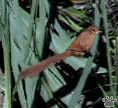
Emutail
(Dromaeocercus brunneus),
PN Ranomafana. |
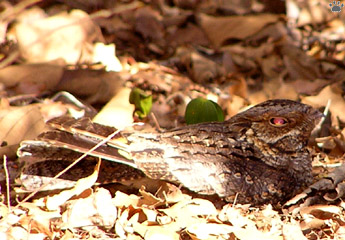
Madagascar nightjar (Caprimulgus madagascarensis), Kirindi FR. |
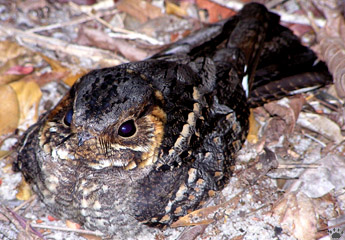
Collared nightjar (C. enarratus), PN Andasibe-Mantadia. |
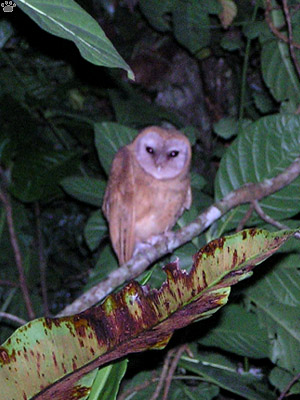
Madagascar red owl (Tyto soumangei), Parc National Montagne d'Ambre. |
Other local birds still have close relatives on the mainland, but it doesn't mean they are not interesting. Madagascar red owl (left) is a rare rainforest relative of common and widespread barn-owls. This is one of very few photos ever taken in the wild. |
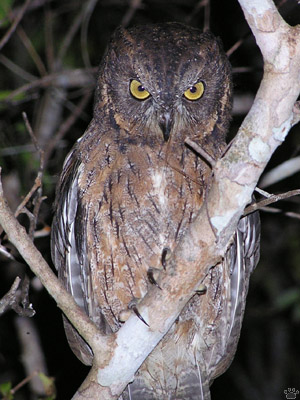
West Madagascar scops-owl (Otus madagascarensis), Kirindi FR. |
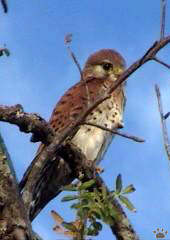
Madagascar kestrel (Falco newtoni),
Parc National L'Ankarana. |
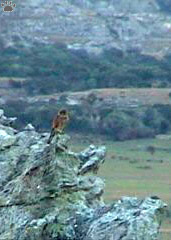
Madagascar kestrel (Falco newtoni),
Parc National L'Isalo. |
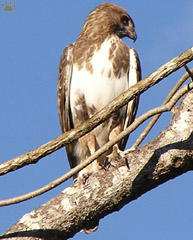
Madagascar buzzard (Buteo
brachypterus), Kirindi FR. |
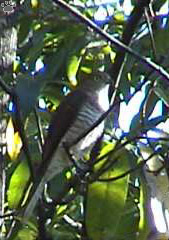
Madagascar sparrowhawk (Accipiter
madagascarensis), PN L'Isalo. |
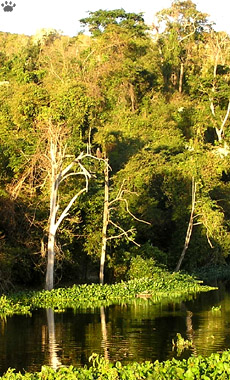
Madagascar fish-eagle (Haliaeetus vociferoides),
Parc National d'Ankarafantsika. |
Unfortunately, most native birds of Madagascar are endangered or threatened by habitat loss. Protection of remaining forests has improved a lot during the last two decades, but wetlands and pristine coasts are still rapidly disappearing.

Madagascar grebe (Podiceps pelzelni), d'Ankarafantsika.
Very few lakes, marshes and rivers are in Nature reserves. There are less than 100 pairs of Madagascar fish-eagles left; many waterbirds and shorebirds are on verge of extinction or already extinct. |
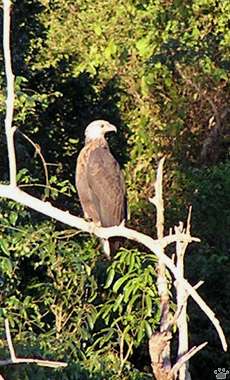
Madagascar fish-eagle requires lakes with a lot of
fish for breeding. PN d'Ankarafantsika. |
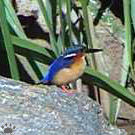 |
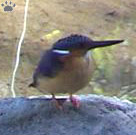 |
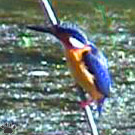 |
 |
 |
| Malachite kingfishers (Alcedo vintsioides), PN L'Isalo and PN d'Ankarafantsika. |

Malachite kingfisher
(Alcedo vintsioides), PN L'Isalo. |
Malachite kingfisher is still common because it's very adaptable. It can be found on lakes, rivers, forest swamps, even in rice paddies and mangroves.
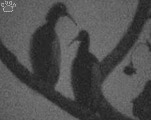
Madagascar crested ibises (Lophotibis cristata), PN Montagne d'Ambre.
Its smaller relative (right) is a rare forest bird. Madagascar crested ibis and Cuvier's rail (below) are also forest birds, very shy and difficult to see. |

Madagascar pygmy kingfisher (Ceyx
madagascarensis), PN L'Ankarana. |

Souimanga sunbird (Nectarinia souimanga), Ifaty. |
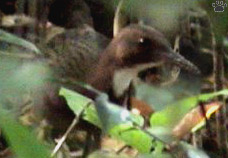
Cuvier's rail (Dryolimnas cuvieri), PN d'Ankarana. |
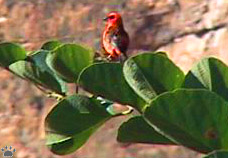
Red fody (Foudia madagascarensis), PN L'Isalo. |
 |
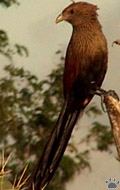 |
Interestingly, there are very few birds in agricultural areas, villages and towns of Madagascar. One possible explanation is that humans have arrived here less than 2,000 years ago, so local birds didn't have time to adapt. Coucals, paradise-flycatchers and wagtails are common species of gardens and partially wooded pastures. |
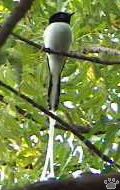 |
 |
Madagascar coucal (Centropus toulou),
Park National L'Ankarana. |
Madagascar paradise-flycatchers (Terpsiphone mutata),
two types of male plumage, PN d'Ankarafantsika. |
 |
 |
| Madagascar wagtail (Motacilla flaviventris), Parc National Ranomafana. |
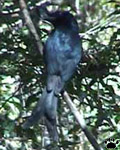
Madagascar drongo
(Dicrurus forficatus),
Maroantsetra. |
Madagascar drongo (left) is one of the island's commonest birds, while Benson's rock-thrush (right) is one of the rarest, known only from a few rocky massifs in one National park. In fact, an unusually high number of local birds are rare, little-known, very local, or presumed extinct for the lack of information. If you really want to discover a new bird species, two-three years on Madagascar (not much of a sacrifice, in my opinion) might be enough. It would probably take about as long to obtain good pictures of all known species. I only managed to snap a few, but I had less than a month. Just one more reason to come back to what is now one of my favorite countries. |
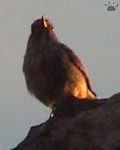
Benson's rock thrush
(Monticola bensoni),
PN L'Isalo. |

Madagascar hoopoe (Upupa epops marginata), Ifaty. |
Part 6: Geckos
Back to Part 4
Home
|